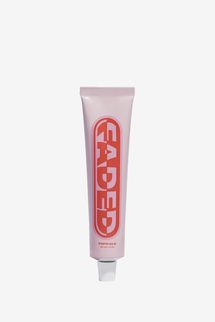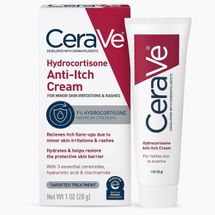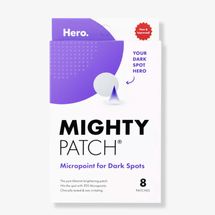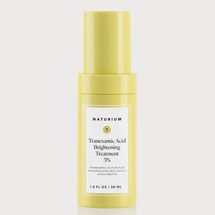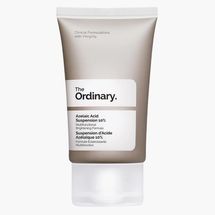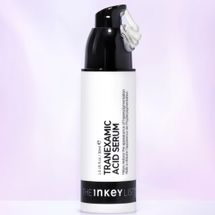
Dear Beauty Editor,
I got a bunch of bug bites on my legs this summer and now there are dark scars where the bites were. Do I treat them like acne scars? If so, how? Are there any products that will fade them?
—Anon.
This summer, everybody wants to look like a Latte Girl or a Strawberry Girl, but you know who doesn’t get a TikTok paean? Mosquito Girl. She’s the one who went to that rooftop hot-dog party without DEET and has the bites to show for it. Well, the bites themselves are gone. But she’s left with the scars — or, more accurately, the post-inflammatory hyperpigmentation (or PIH). Read on for some tips on how to deal with the aftermath of a mosquito attack, including my new discovery: brightening hydrocolloid patches.
“When a mosquito or other insect bites us, our body recognizes the left-behind saliva proteins as foreign invaders and triggers an immune response, which causes inflammation, redness, and swelling,” says board-certified dermatologist Dr. Alexis Stephens. Your body also pumps out histamine that causes itchiness, and if you scratch, you can damage the skin, leading to — you guessed it — more inflammation. Your immune system will kick in by releasing inflammatory mediators, but some of these specialized molecules can actually increase melanin production. Eventually, the injury will heal, but the excess melanin often remains behind in the form of a dark spot. This process happens to everybody, but the hyperpigmentation is “particularly pronounced in individuals with darker skin tones,” says Stephens.
So what can you do once the spots set in? First, keep them protected from the sun. “UV exposure can darken the spots further,” Stephens says. Sure, sunscreen is great, but you’re even better off with some physical coverage, like sun-protective leggings (Nike makes cute ones you can also swim in). If you don’t expose the spots to the sun, they’ll eventually fade — but it could take months.
To speed up the process, you can head to the dermatologist for a cream with the prescription skin-lightening ingredient hydroquinone, says board-certified dermatologist Dr. Kaveri Karhade. But she says hydroquinone is tricky because you have to apply to the brown spots carefully, so it doesn’t lighten the skin around them. (It’s also known to have other side effects, and you can’t use it if you’re pregnant or breastfeeding.) If that feels like too much effort, Karhide recommends the non-prescription topical ingredients azelaic acid, tranexamic acid, and/or retinol. Some of her favorite spot-fading products with these ingredients are Topicals Faded Serum for Dark Spots & Discoloration, The Inkey List Tranexamic Acid Serum, and The Ordinary Azelaic Acid 10% Suspension Brightening Cream.
Stephens suggests using topical products with active ingredients like niacinamide, tyrosinase inhibitors, retinoids, or alpha hydroxy acids. And she typically recommends products “with multiple ingredients that work on different pathways of melanin production.” Topicals Faded Serum for Dark Spots & Discoloration is one of her favorites, as is Naturium Multi-Bright Tranexamic Acid Treatment 5%. She also recommends doing a patch test with any new product to make sure the formula doesn’t cause irritation or an allergic reaction — either of which will set off an inflammatory response, which is what got you into this situation in the first place.
In summers past, when I was trying to fade bug-bite scars, I would apply a tranexamic acid serum and then cover the area with a waterproof bandage, which acts as sun protection and prevents me from picking or scratching the spots as they heal. But this summer, I discovered Hero Micropoint for Dark Spots — which seem to speed up the healing time. They’re inconspicuous little hydrocolloid patches, and the skin side is laced with tranexamic acid and niacinamide, both of which help to treat discoloration. (Side note: The company doesn’t claim they’re waterproof, but I’ve noticed they stay on if you’re taking a quick dip. However, if you get really sweaty or you plan on a longer swim, bring extras with you so you can reapply after you dry off.)
In the future, if you get a bug bite and you can prevent it from turning into an open wound or scabbing over, you’re much less likely to get a dark spot. I know that’s not much comfort now, but next time you get bitten, treat the spot like a burn and immediately apply a cold compress. “That will help to reduce swelling and numb the area, reducing your urge to scratch,” says Dr. Stephens. After the cold therapy, apply an over-the-counter hydrocortisone cream, such as CeraVe 1% Hydrocortisone Anti-Itch Cream, which will help to decrease the inflammatory response and make the area less itchy. Continue to apply that several times a day, “and cover it with a bandage to help it absorb better,” says Karhide.
You’ll notice that I did not even attempt to offer you advice for preventing the bugs from biting you in the first place. That’s because I’ve yet to find an insect repellent that works and feels and smells good. And I’ve tried all the other little tips that have surfaced over the years — drinking less alcohol, vitamin-B supplements, wearing light colors — to no avail. So if you’re reading this and have a bite-prevention strategy you swear by, do us all the favor of dropping it in the comments below. Our skin needs your help!
Shop These Bug Bite-Fighting Products
Send your questions to [email protected]. (By emailing, you agree to the terms here.)
More Beauty Advice
- How Do I Prevent Botox Immunity?
- Do Perfume Oils Last Longer Than Sprays?
- How to Layer Your Skin-Care Products in the Right Order



